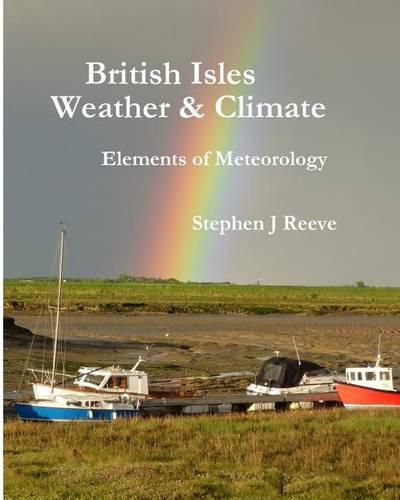British Isles Weather and Climate: Elements of Meteorology
Stephen John Reeve

British Isles Weather and Climate: Elements of Meteorology
Stephen John Reeve
British Isles Weather & Climate allows the reader to develop a true understanding of the essential elements of meteorology. Throughout the book there are ‘British Isles’ sections detailing how specific weather elements affect the islands as a whole and more specific regions to make the science more relevant. Using this book as a vehicle to study the elements that drive the weather of our islands readers can, if they wish, take their studies to a higher level or perhaps look at weather as it relates to a range of activities including water sports, aviation, climbing and walking. The book begins in Chapter One with a discussion of some of the major properties of the atmosphere. This sets the foundation for our study because it is the physical and chemical properties of the atmosphere that determine how the various elements of weather evolve, develop and interact to produce the day to day conditions with which we are so familiar. Although it is beyond the scope of this book it is impossible to understand the winter-spring drought of 2012 and the subsequent cool, wet and windy weather without some appreciation of the characteristics of the atmosphere. In this opening chapter, there is particular emphasis on solar radiation and the resulting energy transfers across the surface. These are central to the study of meteorology because they drive the global air and ocean currents that are a key element in the climate and weather of the British Isles. The next chapter is a detailed examination of the moisture content of the atmosphere and how that varies spatially and temporally to produce a number of different phenomena. That leads to Chapter Three with an explanation of cloud formation and a description of the major cloud types followed by a brief look at fog in the next chapter. This part of the book ends with a thorough explanation of how and why pressure varies across the surface of the Earth and how that produces the wind regime of the British Isles. This includes a brief look at local winds such as those found along coasts and in highland areas. The first part of the book establishes the theoretical background to the elements affecting the weather of the British Isles. Part B builds on this to show how weather systems develop on the atmospheric stage and affect the weather of these islands. Probably the most significant of these systems are the mid-latitude depressions that regularly cross the British Isles bringing wind, cloud and rain. The origin and development of these is considered in Chapter Seven and the resulting weather described at length in Chapter Eight. The following chapter looks at the generation of thunderstorms and their associated weather dominated by thunder, lighting and squally showers. Air masses and their weather are described at length in Chapter Ten. Although these are clearly not ‘systems’ they are included here because different air masses with their varied source regions and tracks play a significant part in the formation of depressions. They are also a key factor in the weather associated with a particular depression and indeed the weather of other systems such as non-frontal lows, troughs, anticyclones and ridges. Part B is completed by a study of anticyclones, which although usually associated with quieter weather than that brought by depressions are nonetheless an important feature of the weather of these islands. The final part of the book draws together the different elements studied and demonstrates how they can be used in what we might call DIY forecasting. Chapter Twelve shows the reader how to interpret weather charts with twenty different synoptic situations discussed in detail. Chapter Thirteen shows how we can observe visual signs in the sky to predict local weather more effectively. The final two chapters look at the making of commercial forecasts and how they are presented through various media.
This item is not currently in-stock. It can be ordered online and is expected to ship in approx 2 weeks
Our stock data is updated periodically, and availability may change throughout the day for in-demand items. Please call the relevant shop for the most current stock information. Prices are subject to change without notice.
Sign in or become a Readings Member to add this title to a wishlist.


